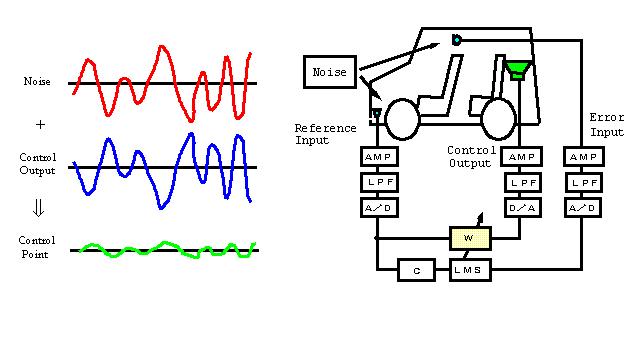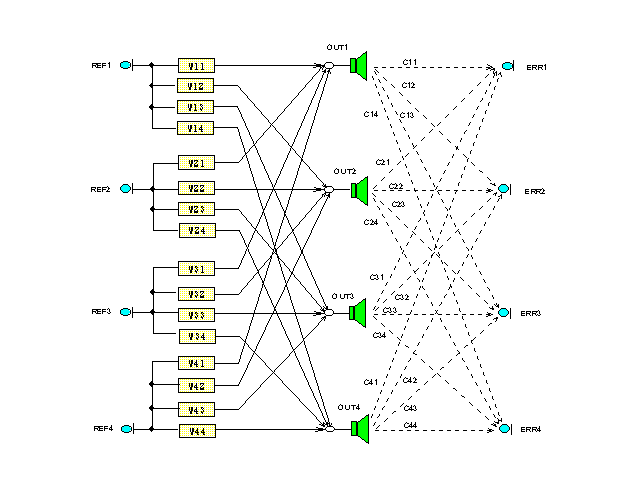In Active Noise Control, an anti-phase sound wave is emitted from a control
speaker to cancel the noise sound wave. Actually, the noise sound would change
from moment to moment, so in order to cancel the noise sound, the control sound
should be changed in response to the noise sound. To achieve that, the
controller always has to monitor the sound wave near the noise source (called a reference signal)
and the controlled point (called an error signal), and calculate to make an anti-phase
sound wave (called a control output) out of the reference signal. The controller
itself changes and adjusts its characteristic to minimize the power of the error
signal. Such a control method, in which the
controller adjusts itself to
the surrounding conditions, is called Adaptive Control. Although it needs very
high calculation capability, the latest high speed
digital signal technology has made it possible for real-time application.
Active vibration control is also
done in the same way. An anti-phase signal made out of a reference signal from a
vibration sensor is emitted to an actuator to suppress the vibration.
See also :
Extending the Noise Reduction Zone

Extend to Multi-channel System
In the case of a simple control system, like cancelling fan
noise in a ventilation duct or engine noise in a car cabin, we can assume the
controlled system has one noise source, one control output and one controlled point (error
point). This configuration is called "Case(1-1-1)". In this case, the
adaptive filter W adjusts itself and becomes a filter, including which the transfer characteristic from the
noise source to the error microphone via the reference
microphone and the control speaker is the same as the direct transfer
characteristic from the noise source to the error microphone, but it has just
inverse phase.
Although, when there is more than one noise source, the number of
reference inputs needs to be equal to or larger than the number of noise
sources. That is because the process for deriving inverse filters is just the same
as the process for solving the simultaneous equations, which have variables related to
reference signals and error signals. To solve these equations, we need the same
number of reference inputs related to the number of equations. But, it is easier said than done. If you increase the
number of reference
input, it turns out that you need a tremendously powerful computer. One of the
solutions is to use Redec Ex_tool, which supports Multi-channel Active Noise
Control and enable you to achieve a Case(4-4-4) system with 4ch reference inputs,
4ch control outputs and 4ch error inputs.

Multi-Channel Noise Cancellation system
